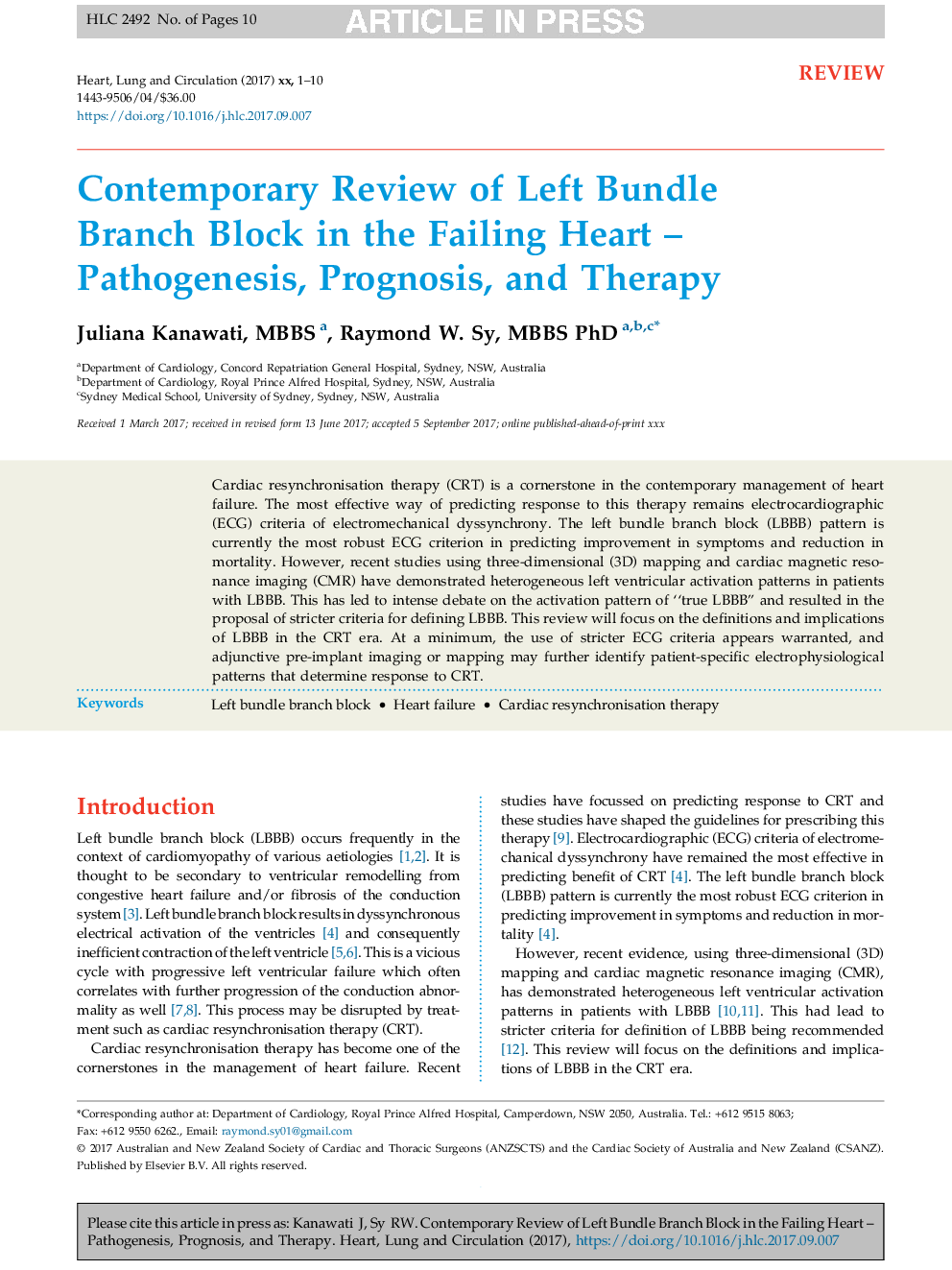| Article ID | Journal | Published Year | Pages | File Type |
|---|---|---|---|---|
| 8659793 | Heart, Lung and Circulation | 2018 | 10 Pages |
Abstract
Cardiac resynchronisation therapy (CRT) is a cornerstone in the contemporary management of heart failure. The most effective way of predicting response to this therapy remains electrocardiographic (ECG) criteria of electromechanical dyssynchrony. The left bundle branch block (LBBB) pattern is currently the most robust ECG criterion in predicting improvement in symptoms and reduction in mortality. However, recent studies using three-dimensional (3D) mapping and cardiac magnetic resonance imaging (CMR) have demonstrated heterogeneous left ventricular activation patterns in patients with LBBB. This has led to intense debate on the activation pattern of “true LBBB” and resulted in the proposal of stricter criteria for defining LBBB. This review will focus on the definitions and implications of LBBB in the CRT era. At a minimum, the use of stricter ECG criteria appears warranted, and adjunctive pre-implant imaging or mapping may further identify patient-specific electrophysiological patterns that determine response to CRT.
Related Topics
Health Sciences
Medicine and Dentistry
Cardiology and Cardiovascular Medicine
Authors
Juliana MBBS, Raymond W. MBBS PhD,
